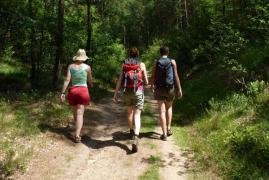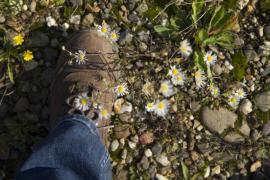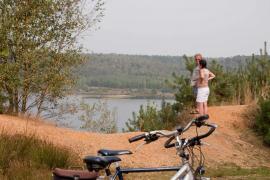Borgharen
Borgharen (also called ‘Hare’ in the local Limburg dialect) is a parish that is part of Maastricht municipality in the Dutch province of Limburg. The name Borgharen originates from the Dutch words borg (castle) and haar (sandy ridge). Castle Borgharen was built between the fifteenth and eighteenth centuries. The castle includes a tower that is part of the original construction dating back to the Middle Ages. In 2010, at the Oostelijke Rug (eastern ridge) between Spekstraat and Pasestraat, a unique mass grave for horses dating back to the seventeenth or eighteenth century was discovered during excavations. The mass grave contained the remains of at least 69 horses. Never before in Europe were so many horse skeletons found in a single grave. It is likely that the horses died during the 1632 siege of Maastricht or during the French siege led by Louis XIV in 1673.
Since the construction of the Juliana Canal in the 1930s, Borgharen has been located on a kind of island, separated from the city, harbour, and industrial areas. The Borgharen dam built in 1929 on the southern side of the village marks this transition and is also the point of departure for the free-draining Grensmaas ('border Meuse') area. This section of the Meuse snakes for several kilometres over the border between the Netherlands and Flanders.
Discover RivierPark Maasvallei in Borgharen
Roam around the riverbed at Borgharen when the Meuse is at its lowest levels. Then you can even walk across to Belgium. If the water levels of the Meuse are a little higher you can still find your way across further upstream. Here you find the foraging trails: the well-trodden routes of grazers and hikers. If the water levels of the Meuse rise even further it becomes a little more soggy but most of the trails remain accessible with some good footwear and by using the stepping stones that have been placed here. The useful Borgharen discovery map by RivierPark Maasvallei helps you to peacefully explore this spectacular natural environment. Get the discovery map at any of the South Limburg tourist information offices (VVV Zuid-Limburg) and via their online shop.
Junction system for cycling routes
Discover RivierPark Maasvallei on the bicycle. The practical junction network for cycling routes allows you to plan your route with the relevant numbers before your trip. When you embark on your cycling trip, all you need to do is follow the numbers that you have selected. The distances between the junctions are also clearly marked allowing you to plan routes between the junctions. The Dutch cycling routes junctions connect directly with those in Belgium. The maps for the network are available at all South Limburg tourist information offices (VVV Zuid-Limburg). You can also order the map of the cycling routes junctions at our online shop.
Savoir Vivre in Maastricht
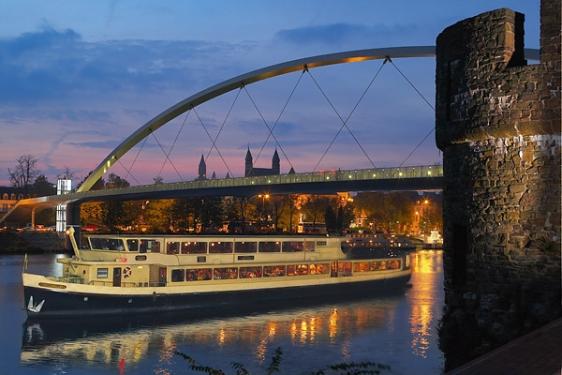
Borgharen is right next door to the city of Maastricht, the capital of the province of Limburg and a place where local residents know how to enjoy life to the full. The sense of history that is created by a past that stretches across twenty centuries is palpable in the old city centre. The narrow cobbled streets, old churches, historic monuments, stately mansions, treasuries, and impressive façades make Maastricht a wonderful city to stay in and explore. The remains of the ancient city ramparts and underground fortifications tell the story of a turbulent and violent history.
Large grazers
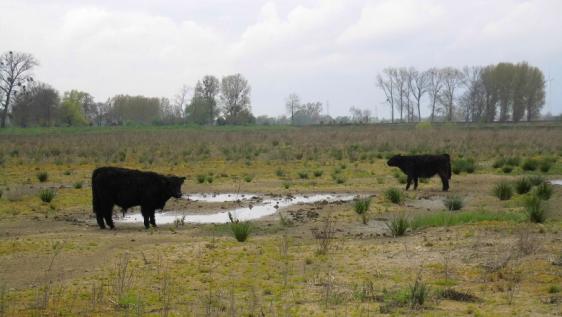
Wild Konik horses and Galloway cattle roam the banks of the Meuse in Borgharen. These large grazers play a key role in this environment. Their grazing keeps the landscape open and accessible and they create the perfect environment for special flowers, butterflies, birds, and small wildlife to flourish. Without the presence of the horses, cattle, deer, and beavers, the natural environment would quickly be overgrown with vegetation. Beware! Please do not approach the grazers and keep a distance of at least 25 metres.
Wandering through a sea of flowers
The ebb and flow of the Meuse brings countless seeds along with it. By allowing nature to take its course, a sea of flowers has grown that attracts beautiful butterflies and bees. The grazers at Borgharen have plenty of space and can choose what to eat. They tend to leave most of the flowers uneaten. When you visit the area in the summer, be prepared for a beautiful display of colours. After the flowering period, the flowers start to produce seeds. The seeds are food for mice and all types of birds who themselves are on the menu of predators and birds of prey.
Wildwood along the Meuse
Trees and bushes grow naturally along the banks of the Meuse. Willow seeds that are washed onto the banks or carried over by the wind onto fertile soil can grow into an entire forest within five years. These forests appear in locations where the Meuse has deposited fertile clay, sand, and gravel, or where excavations have taken place. Horses, cattle, and beavers munch away at the vegetation and so keep the vegetation trimmed and neat, especially in the winter. This creates open spaces and low-trimmed vegetation. Forests located along river banks are known as riparian forest. This is a true wildwood!
A paradise for birds
The Meuse and its river banks provide a home for many fascinating bird species. High up in the trees sounds the song of the Eurasian skylark while the steep banks are bustling with sand martins. Common linnets feast on thistle seeds in the thickets while a kestrel roams the skies above. Gulls, ducks, geese, swans, and waders call the river home while the little ringed plover nests comfortably on the gravel. During the migratory season, ospreys, common cranes, and storks fly by with a quick stopover in Borgharen.
Excavations in Itteren will continue until 2017.
The Maria chapel stands next to the Meuse at the edge of the parish of Itteren. Here you will find a beautiful and tranquil lookout point. In 1926, 1993, and 1995 this chapel was witness to and victim of extremely high water levels. The supplication on the wayside cross did little to prevent the floods. Not far from the chapel, the walking trail located between the village and Aan de Maas begins. This is one of the best-kept secrets of Itteren. In the north of the village lies castle farm Hartelstein. The Geul river flows past here and meets up with the Meuse at Voulwames. Gravel extraction will continue near this farm until 2018. After that, nature will be allowed to run its course.
Activities on the Meuse in Maastricht
The city of Maastricht has been inextricably linked with the Meuse since its founding by the Romans. Maastricht offers many possibilities for enjoying a day out on the river.

